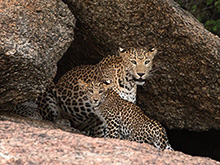
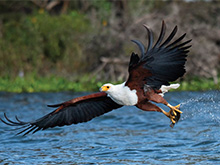
Which is one of the most difficult moments to capture while photographing wildlife?
For me, it would be shooting the Tiger-Sambar (deer) hunting sequence during May 2016 at Ranthambore. These were the final few minutes of our safari and light was fading out quickly. Added to that was the excitement of my fellow passengers in witnessing a once-in-a-lifetime scene. They were jumping up and down and rocking the jeep over; making it even more difficult to click stable and sharp images.
It is easy to get excited when witnessing such a rare moment, but as a photographer one has to keep his calm to be able to execute the scene with clinical precision. Since I had photographed hunting sequences before, in India and Kenya, I was only worried about taking sharp pictures at minimum possible ISO and at a low angle. So I settled down at floor of the jeep with my beanbag and carried on with my ‘work’ amidst all the chaos.
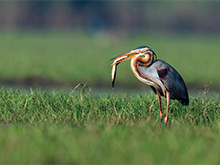
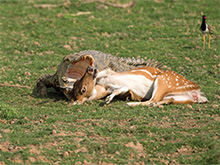
So far, which has been your favourite location for photography?
I have been lucky to be able to visit some of the very remote places around the world for photography; right from almost all the Indian forests, to Kenya and Tanzania grasslands, to landscapes of Iceland and Thailand, to Sri Lankan forests. However, one place I really enjoy for sheer enormity of wildlife is the Masai Mara in Kenya. The vast savannahs offer unlimited opportunities to try different compositions, witness some close portraits as well as intense actions like a Cheetah or Lion chase.
From the time that you went for your first wildlife photography trip, till date, which is the most crucial lesson that you’ve learnt about the wild as a photographer?

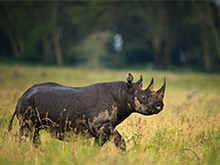
Patience. There is nothing more important than patience to succeed as a wildlife photographer. We operate in an uncontrolled environment where we are at the mercy of wildlife on what we see, and in what light conditions and distance we see it from. So we have to wait patiently for the right moment before pressing the shutter button. There can be trying times, when for days you do not get any expected moments or sightings in the field, but on a single good day, you make up for all of it.
Next is a photographer’s reflexes and ability to predict action. While in the field, we always have to be on our toes and be ready for unexpected action. The skill that we develop over time is the ability to predict that action and prepare for it. For instance, once at Bera, there was this Leopard cub sitting on a rock, and it got up facing its sibling at a level below. From the way it got up, I could anticipate it may jump towards its sibling and was prepared with camera settings and frame composition according to that. During the photography tours I conduct at WildVoyager, one thing I tell my participants is to visualize the frame first and if you are convinced only then press the shutter button.
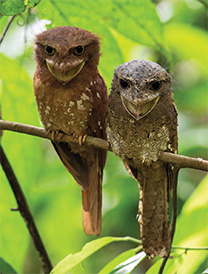
What are your views about post-processing of images?
I have a strong belief that we should use post-processing only to present what we actually saw. If I saw the scene in certain kind of lighting condition, and the RAW image somehow fails to replicate that, I would use processing tools to recreate the same mood. My usual processing routine is some basic color correction and sharpening. However, I strictly abstain from any kind of digital manipulation and would advice the same to budding photographers. If you cannot get the image right in the field at first time, photoshop cannot do it for you. In such a situation, delete the picture, and go to the field again!
Would you like to give any advice to budding photographers who aim at pursuing professional photography as a career?
I believe that photography looks like a very glamorous profession and gives instant fame on social media, but it is equally important to pursue and achieve your educational goals parallely. While I cannot comment a lot on other genres of photography, I can say that it is a little difficult for beginners to make a living as a nature and wildlife photographer. Let me clarify here that a professional wildlife photographer is one who makes most or all of his living by selling his/ her images or getting paid a salary/fees for his photography assignments.
My suggestion to youngsters would be – get into this field if you really have a passion for nature and wildlife photography, but do not do this with an expectation to earn your livelihood. If you are doing really exceptional work, you will be recognized with time and will have avenues to turn this into full time profession. But that will not come overnight, and may take years to happen. |SP

